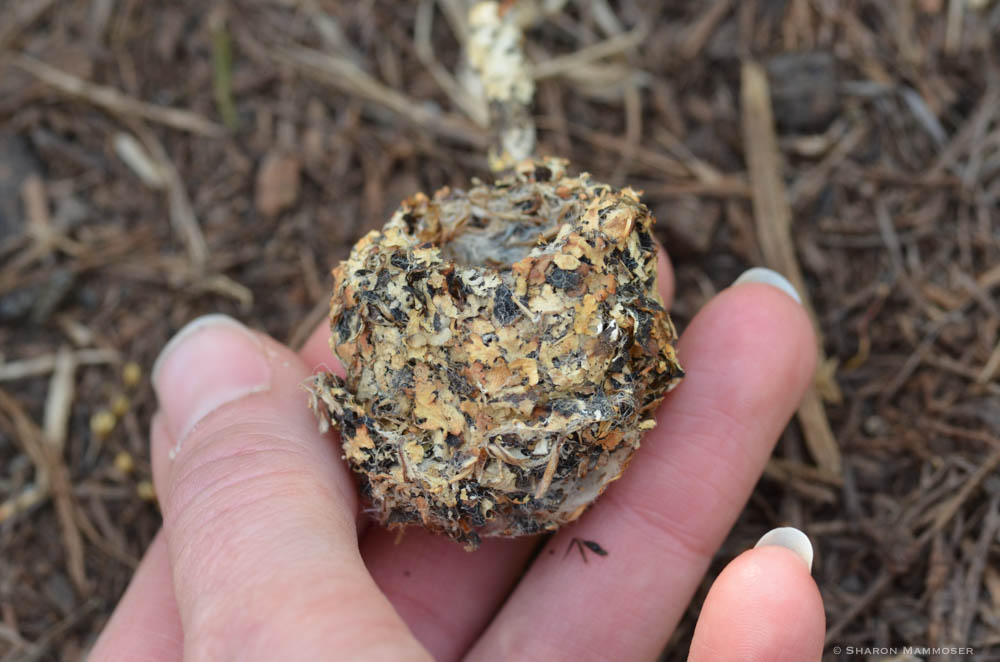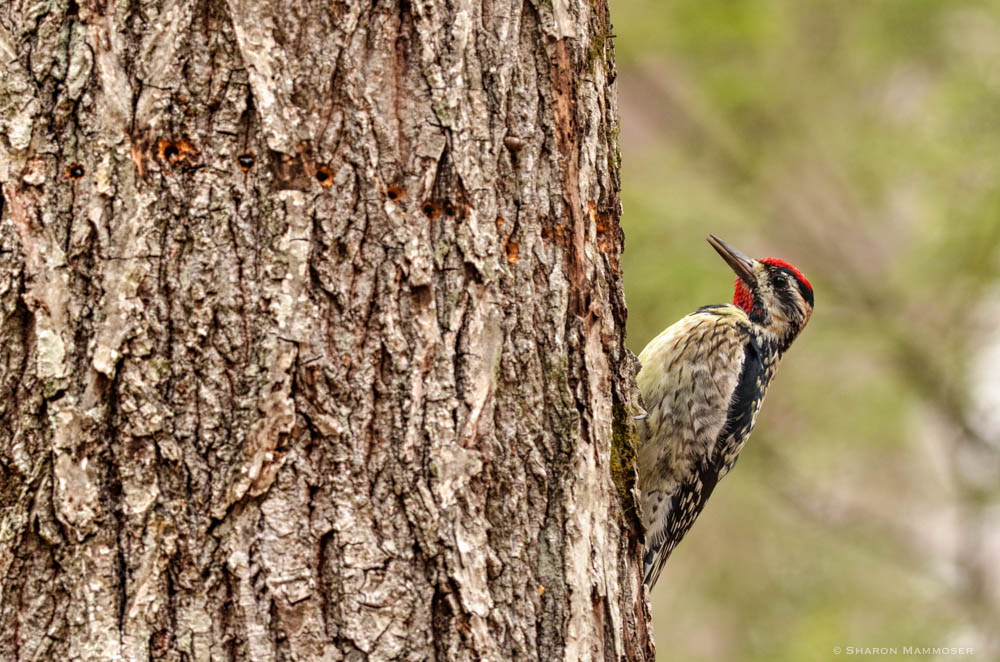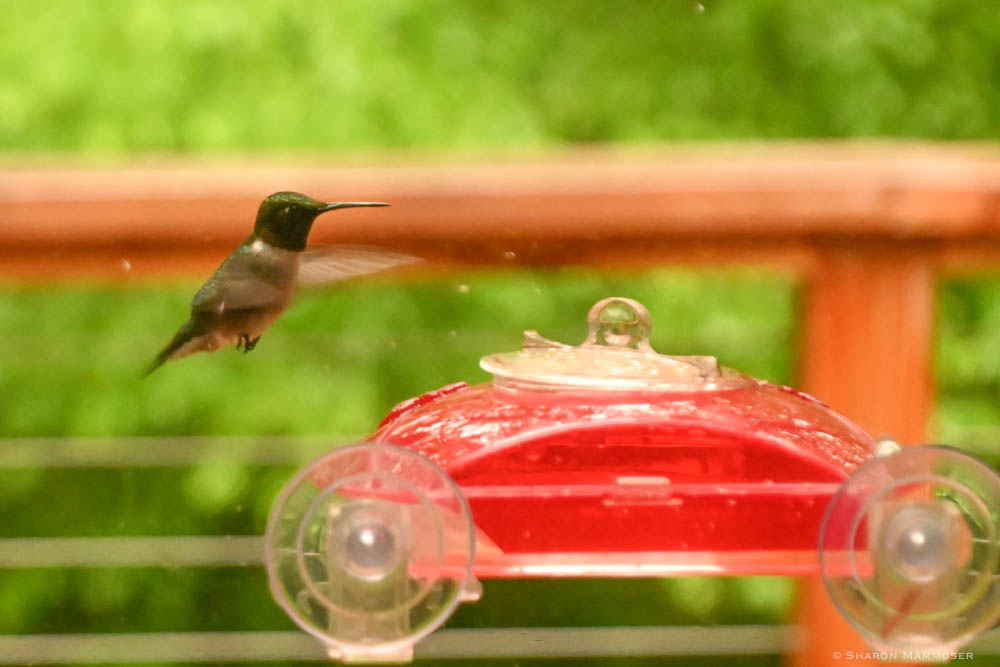Get Ready! These Beloved Birds Are on Their Way

By Naturalist and Photographer Sharon Mammoser.
When our hummingbirds leave in the fall, I’m always sad to see them go. You probably know the feeling, right? Looking out your windows and not seeing the tiny birds flitting around leaves a bit of an empty feeling. Though small, they are captivating and it’s easy to spend a lot of time watching and enjoying their presence. So, when March rolls around and I dig out the abandoned hummingbird feeders from the basement and make nectar for the first time, it’s always with a sweet feeling of anticipation, excited to see “my” old friends again.
Did you know our ruby-throated hummingbirds are already on their way north? Most spend the winter in Mexico and Central America but leave in late February, gradually making their way north to Texas, Louisiana and along the Gulf Coast. Some fly straight across the Gulf of Mexico–a journey of over 500 miles, while others skirt the edge. Those that fly across the Gulf will take 18-20 hours to do so–an amazing feat when you consider that the bird weighs less than a nickel! Regardless of their route, the journey is fraught with obstacles and challenging conditions including storms, cold temperatures, rain, hail, snow, difficulty finding nectar, buildings, predators, and many more.

Here in western NC, I have been keeping records of the arrival date of the first hummingbird in spring since 2012. At my house in the woods, I’ve seen the first hummingbird anywhere from April 1- April 16. There’s even a map you can check to see when the birds have been spotted and recorded in your area. As April approaches I’m always on high alert, spending considerable time glued to the windows, or feeders, hoping to see what I feel like is an old friend. Most of the time it’s their namesake hum that alerts me to their presence first. Did you know that ruby-throated hummingbirds beat their wings 50 times per second? No wonder we can hear them whizzing by!
Their presence often coincides with the arrival of another bird– the yellow bellied sapsucker. As its name suggests, this woodpecker indeed has a yellow belly and drinks sap. Like a New Englander drilling holes in maple trees to get sap for maple syrup, this bird drills wells in trees, usually in a regular pattern of small holes in rows all around the trunk of a tree. Sap moving in the tree trunk flows out these holes, and small insects sometimes get caught in the sticky sap. Though the woodpecker creates them, the hummingbirds take advantage of these wells too, especially early in the season before herbaceous plants are flowering. Ruby-throats will actively follow the sapsuckers and grab a quick drink when the woodpecker flies off to check the wells at another tree. Like the woodpecker, the hummingbirds will drink the sap and eat the insects that become trapped. Studies show that hummingbirds often build their nest within a short distance of wells from yellow-bellied sapsuckers.

How to Create Habitat for Hummingbirds
Did you know hummingbirds also feed on insects? Many people know only that they drink nectar, but more than half of their diet is small insects and spiders. If you want to attract these birds to your yard, adding hummingbird feeders is only part of the equation. The other parts are about what you do—or don’t do— in your yard:
- Avoid pesticides since these kill the very insects hummingbirds need.
- Offer lots of native flowers that bloom throughout the season, from early spring through fall. You can see a list of great flowers for hummingbirds here.
- Just as important, leave those leaves where they fall as they are essential habitat for many, many creatures including insects. Decomposing leaves are necessary for a healthy, functioning ecosystem. (If you can’t leave them where they fall, rake them up and put them around your trees, or in a “wild” area. Then leave them alone!)
If you want to attract hummingbirds to nest in your yard, having your feeders out early is important. Now is the time! It’s the males who arrive first. If they don’t find suitable habitat, they may just keep on going.
As I’ve written about in the past, the best hummingbird feeders are ones that come completely apart for easy access to all of the parts for cleaning. Another feature that’s important are feeders with no yellow, since yellow tends to attract bees and wasps like yellow jackets. And save some money and potential harm to the birds from red dye by making your own nectar. It’s super easy to make your own nectar— just add one cup of granulated white sugar to four cups of hot water (Please never use raw sugar, honey or other sweeteners). It is not necessary to boil the water, though doing so doesn’t hurt anything. Store the nectar in a pitcher in the fridge and remember to clean and refill your feeders regularly to keep “your” birds healthy.
Related: Be a Hummingbird Hero: 12 Ways to Make a Positive Difference.
Happy hummingbird watching!
